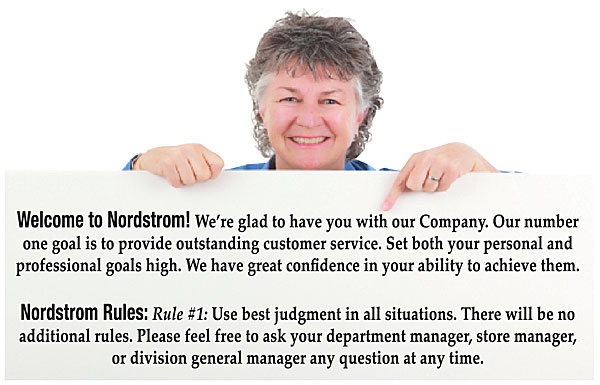
 Hear any of these lately? We value integrity. People before profits. Teamwork. Responsibility. Do unto others as you would have them do unto you. Zero waste. Value diversity. Think Global, Act Local. These are samples of guiding principles that, whether spoken out loud or not, influence behavior. Guiding principles exist at many levels – individual, group, organization, society, and even country. They can also be associated with particular fields (accounting, design, art) and professions (doctors, lawyers, law enforcement, teachers).
Hear any of these lately? We value integrity. People before profits. Teamwork. Responsibility. Do unto others as you would have them do unto you. Zero waste. Value diversity. Think Global, Act Local. These are samples of guiding principles that, whether spoken out loud or not, influence behavior. Guiding principles exist at many levels – individual, group, organization, society, and even country. They can also be associated with particular fields (accounting, design, art) and professions (doctors, lawyers, law enforcement, teachers).
Principles are places to think from when deciding what to do. Because principles are not rigid rules or policies, they are open to interpretation. Because of this, the people expected to abide by the principles must have an opportunity to come to a shared understanding of meaning.
A guiding principle creates a behavioral compass and helps an individual determine the rightfulness of her/his actions. By rightfulness, I mean: “Is the behavior in alignment with the guiding principle?” When our actions are consistent with our principles, our performance and satisfaction excel.
One iconic principle is Nordstrom’s famous one and only rule for employees: Use your best judgment in every situation. Talk about open to interpretation! This rule does not exist in a vacuum. Employees are trained in the “Nordstrom Way.” The conversations that make up the Nordstrom culture reinforce the principle of where to think from when getting the job done. And the job to get done is to provide outstanding customer service. Employees who don’t travel the Nordstrom highway don’t work there.
What’s in your compass?
 What are the guiding principles in your place of work?
What are the guiding principles in your place of work?- Are they alive in your decision-making and behaviors or hanging dead on the wall like a “we-did-that-once” trophy?
- What are your personal guiding principles? (Write a few down. They are worth knowing.)
- Do they line up with or are they at odds with those in your work place? (This can help reveal what’s missing and focus your efforts to perform at your best.)
3-Step Process
Creating a set of guiding principles with the people with whom you spend almost 66% of your waking hours will reduce unwanted tension and misunderstandings and increase productivity and satisfaction. Of course, it’s always possible that this process will indicate it’s time for you or someone on the team to move on. Either way, it’s beneficial.
- Before you begin, as the leader and champion of your company, it’s important to understand and commit to a PROCESS, not an event. Generating guiding principles and not living them will cause more harm than good. (BTW, if you’re not the leader, you can make a request, right?)
- Have someone facilitate the conversation in which the guiding principles are authored so everyone, leader and line folk alike, own them. By the way, owning is an act of commitment, not compliance.
- Once the guiding principles have been created, and before you leave the room, put dates in the calendar to revisit the principles every quarter for the next 4 quarters. I think you’ll find that the practice of have a “how we doing?” conversation will be one you will continue because it brings everyone together in a way that can heal old wounds, model desired behavior and help everyone walk the talk.
As part of the process, look at each policy and see if it supports the guiding principles. If it does not, do the work to get it aligned. Either that or change your guiding principle. Inconsistency and double standards will kill the trust you need to have a high-performing, highly satisfying culture.
Go ahead, create your company’s compass and travel your “highway” with pride.
